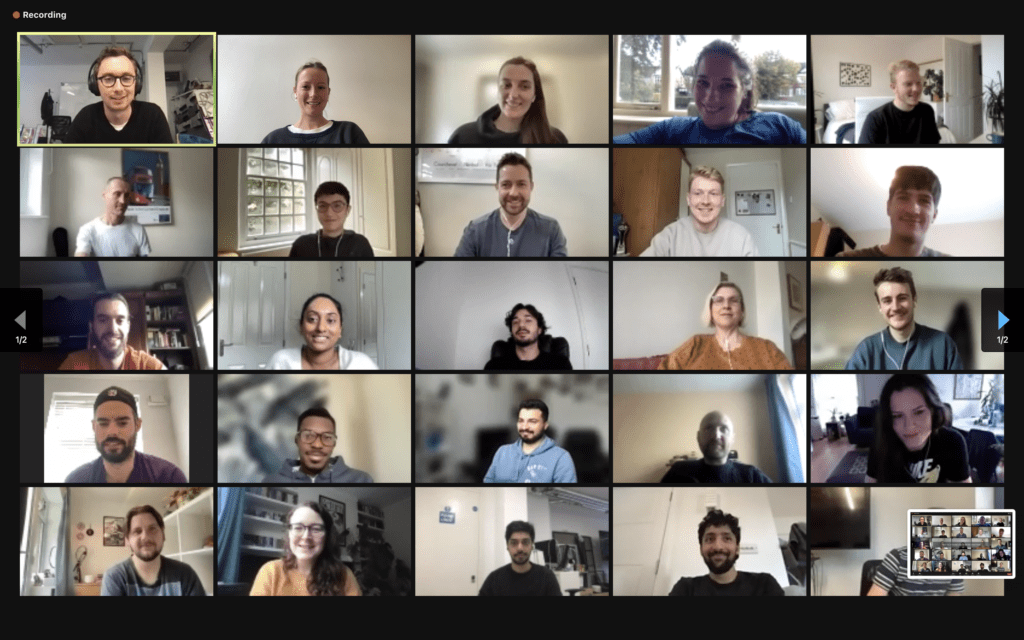What can B2B marketers learn from B2C web design?

A (very) brief history of B2B vs B2C
The distinction between B2B and B2C Marketing is as old as marketing itself. Back in the early 18th century, Tatler Magazine catered to consumers looking for the most fashionable gowns to wear to the season’s ball, while Lloyd’s of London published the first editions of their List, providing maritime business information for the shipping and insurance industries.
At first glance, high society fashion and the high seas of shipping don’t seem to have much in common. The emotional investment in choosing the right outfit and making sure you looked your sartorial best amongst your peers, compared to the hard rational decision of insuring your ship or fleet – surely these had nothing in common? Well as it happens, perhaps more than you might think.
Fast forward 300 years to 2021 and over 90% of Tatler’s consumer reach is via digital channels, while the fastest growth in the insurance market is seen from FinTech companies – think Marshmallow for example. Fashion and finance have converged in the sense of digitisation, but their audiences, and in particular the messaging used to communicate with those audiences, remain distinct.
Emotional vs Rational
What does all this have to do with B2B vs B2C website design? Well, B2C is traditionally seen as brand-led, right side of brain (emotional) focused, building a lasting and meaningful connection with consumers. Whereas B2B is often perceived as product-led, left side of brain (rational) focused, building leads, pipeline and revenue. With these distinctions in mind, the way websites are designed and built can create a clear differentiation between B2B and B2C.
One of the challenges for B2B websites, with this focus on product above all else, is that it overlooks the fact that the decision makers on the receiving end are not automatons, but humans. Not only that, they are not only the IT guy, or CIO – they are very often a range of stakeholders who need to be convinced – and those stakeholders are often not product experts. Furthermore, the majority of B2B website visitors will probably not be BOFU (bottom of funnel) prospects – they will not yet be ready to speak to sales or book a demo. Emotional engagement counts for more than rational persuasion.
Marketing vs Sales
The relationship tension between Marketing and Sales in B2B businesses is well documented; we’ve discussed it ourselves on a podcast. When it comes to attributing business success, or failure, the Marketing team may claim that they have delivered a great quantity of quality leads, and if revenue has not increased as expected, then it’s the fault of the Sales team for not converting them. Conversely, Sales teams may argue that both the quantity (and more often the quality) of leads generated by the Marketing team was insufficient to allow them to close deals.
From a B2B vs B2C perspective, this analogy is useful in terms of comparing how B2B websites are often very focused on sales, i.e. attracting prospective customers into the funnel, nurturing them down the funnel and closing the sale. B2C websites in many ways are closer to the Marketing team, in terms of creating awareness, engagement and placing high value on perception and recall.
The best B2B websites need to work from both a Marketing and a Sales perspective.
What’s the solution for B2B marketers?
So, to address some of these challenges, and the sense of opposed positioning in B2B vs B2C, what can B2B marketers learn from their B2C counterparts when it comes to web design?
1. Build your B2B Brand
Whilst your product, pipeline and revenue are all important – indeed revenue is undoubtedly crucial – focusing purely on those outcomes when you are communicating with your target audience risks delivering a message that will not engage. Indeed, it might actively put them off your brand altogether.
Brand building can be difficult for many B2B businesses because it is difficult to attribute revenue outcomes to. But some brand communication experts such as Byron Sharp think this is fundamentally flawed thinking in the first place. Building your brand takes time, investment and an acceptance that ROI may not be immediate or indeed easily attributable.
Your B2B brand lives in many places, but your website is likely to be the primary digital hub – so it’s crucial that it represents your company values and proposition, as well as being a part of your marketing funnel. Bearing in mind that for many B2B companies 95% of your audience are not in-market at any one time, your website (and other digital marketing channels for that matter) needs to cater to this fact. Ultimately it needs to resonate with and emotionally engage them, because that is more likely to make them remember you when they are ready to buy further down the line.
2. Think Business to Human
The best B2C websites are usually very human, i.e. they feature real people through images and video. The best ones are not using stock images, but visually represent their brand values through bespoke creative. Dove’s Real Beauty campaign has taken this approach since 2004. They understand the need to be seen as authentic and empathetic, and this comes across both visually and in their copy.
B2B websites often have very little of this. And with a focus on product, why would you use this type of content on your website? But if you accept that your brand is equally important, and that the best brands connect with people emotionally, then the whole concept of what a good B2B website looks like begins to shift.
It’s also worth thinking about your stakeholders, in particular the variety of stakeholders involved in B2B decision making. You could have excellent product information that ticks the box for the Product guy, but if the CEO is the final decision maker are they going to read any of that? Unlikely. When they check out your website they’ll be looking at the homepage, some case studies, maybe the ‘about us’ page. If what they see doesn’t resonate with them, all that great work on product will be for nothing.
3. Design and User Experience
Great B2C websites make a great first impression. Design is central to that. Being met with dense text (whether on the homepage, or any other landing page) is unlikely to be a positive experience. That is not to say that an explosion of colour and dynamism, auto-playing videos etc is the right call either. The point is to visually express your brand identity, both overtly and covertly, through your design. Within 5 seconds of arriving on your site, users need to have gathered the key takeaways that you want to express.
For users who choose to spend more than 5 seconds with you, their experience of your site needs to cement and deepen that initial impression. Navigation needs to be smooth and intuitive, with primary sections and pages signposted from the header menu, and secondary navigation directing users from the footer or other less prominent positions.
Consistency of experience is key, so regardless of the content they are consuming the user needs to feel as though they are always engaging with your brand. That is true of design but it’s equally true of functionality; inner website pages need to be built with the same attention to detail as outer pages and the experience on mobile is just as important, if not more important, than on desktop. With B2B website bounce rates often over 50%, good design and functionality is a major contributor to bringing this down for your website. And if users do bounce, if they have at least got a sense of your brand before they leave, they are more likely to return.
4. The Customer Journey
Let’s return for a moment to Tatler and Lloyds of London, and specifically their customers’ purchase journeys towards a new gown and maritime insurance respectively. As mentioned earlier, at face value these are very different investments, one being consumer and the other business. But when you drill down into what that journey involves – a significant investment, research from multiple sources, consideration of various vendors, negotiation and then finally decision – you can see there are many similarities.
The distinction between B2C and B2B feels less relevant than the distinction between the type of purchase and the customer journey towards that purchase. Not all consumer purchases are low value (think expensive gowns, or cars) and not all B2B purchases are high value – Canva Pro is about the same monthly cost as Netflix.
Who is doing it well in B2B?
You might get the impression from this article that all B2B websites are getting it wrong. That’s certainly not the case. In particular, many tech and SaaS websites built over the past few years have done a great job of taking the best B2C website traits and applying them effectively.
Here are just four that we think do it well, and address most if not all of the challenges that we have highlighted above.
Drift helps companies engage in real-time, personalized conversations so they can build trust and accelerate revenue.
Soldo helps companies manage business spending, combining prepaid company cards with a management platform.
Gong enables revenue teams to realize their fullest potential through an in-depth understanding of customer data.
Klarna crosses the B2B and B2C divide. They offer products and services to consumers and retailers within payments, social shopping, and personal finances.
Summary
There are a whole range of strategies and tactics that B2B marketers can learn from B2C web design, and we have only scratched the surface in this article. One of the most important things to take away is not to see B2B and B2C as distinct or opposed. B2B vs B2C, or emotional vs rational, or marketing vs sales, are a problematic way of looking at this issue. Instead, the best B2B Marketers learn from B2C web design and incorporate the best of their approach into their own websites, and indeed their overall approach to digital marketing.

9 great examples of B2B SaaS website designs

Internal day: October 2021
Let's Talk
Do you have a web design and build project coming up that you would like to talk about?